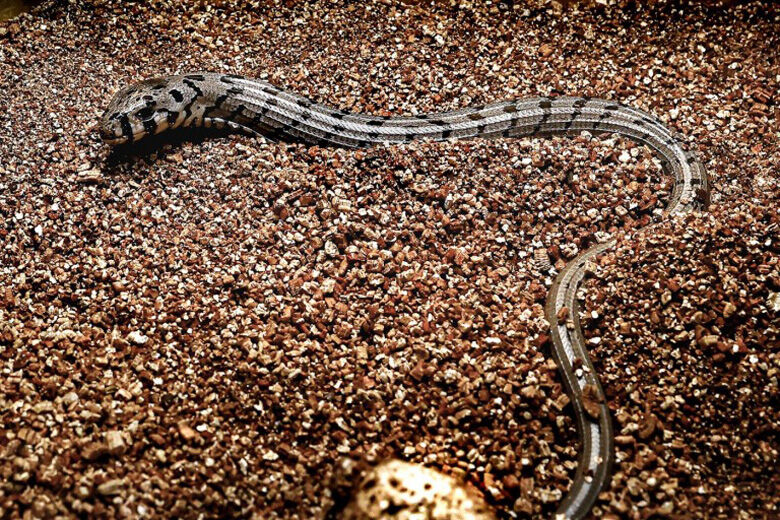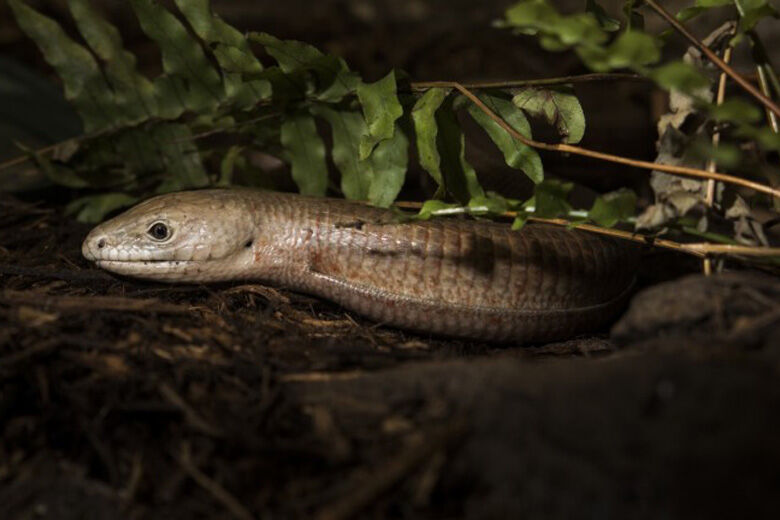It’s been a quarter century since the first European glass lizards hatched at the Smithsonian’s National Zoo. And this year, decades later, those same hatchlings laid eggs of their own — for the first time.
These snakelike lizards have no legs or arms and slither about, but they are notably different from their serpentine, reptilian cousins. It’s their eyelids, ears and thick tongue that file them securely in the lizard category.
And the name — glass lizard — comes from their breakable tails, which shatter in times of distress and danger.
Despite this otherworldly ability and the lizard’s beautifully patterned skin, these reptiles struggle to mate in captivity.

Reptile Discovery Center keeper Robin Saunders dedicates much of her time and research to figuring out how to best “set the mood” for glass lizards.
The key, Saunders found, is imitating the species’ natural habitat, giving mates enough time and a little luck, she wrote in a post for the National Zoo’s blog. This year, the reptile keeper set the mood just right.
After modulating the temperature of the male lizard’s habitat to mimic his natural climate of southeastern Europe and southern Asia, he was ready to mate.
Saunders then placed the male into the female’s enclosure and watched carefully. If the female wasn’t receptive, the two could become aggressive and hurt each other.
Thankfully, the pair was cordial, but one needs a trained eye to tell. Because these lizards are armless and legless, the male bites the female and grabs her by the neck when mating.
“Potentially, he could injure her in doing so, but for the most part the marks he leaves are superficial,” Reptile Discovery Center assistant curator Matt Evans said. “Once she sheds her skin, they are all gone.”
Once Saunders saw bite marks on the female’s neck and a nest in the soil, she knew eggs were on the way.
Sure enough, two leathery, oval and golf ball-sized eggs emerged and later hatched.
These young lizards are now on their own and like to munch on snails, slugs and crickets. Keepers hope to put them on display at the Smithsonian National Zoo.
“Like many of the species at the Reptile Discovery Center, our European glass lizards’ wild cousins are declining rapidly,” Evans said. “Their range is large — throughout Eastern Europe and parts of Asia — but the rocky outcroppings where they live are being bulldozed for construction and development projects.”
The Zoo is open, but entry passes are required as are masks while indoors.









